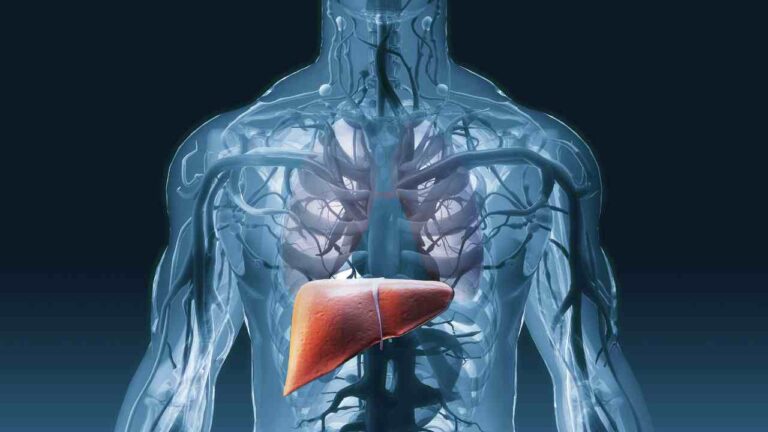Hepatitis C: Symptoms and Causes

Hepatitis C: Symptoms and Causes
Introduction to Hepatitis C
Overview of Hepatitis C
Hepatitis C is a worldwide health threat, with substantial prevalence globally. About 71 million people are afflicted by chronic Hepatitis C infection globally, making it a significant public health concern. The high prevalence is ascribed to multiple factors such as limited awareness, constrained access to healthcare, and harmful medical practices. Particularly, regions in Africa and Asia bear a heavier burden of the disease in comparison to others. Recognizing the global prevalence of Hepatitis C is critical in devising effective prevention and control strategies to mitigate the effects of this infection on individuals and communities.
Transmission of Hepatitis C
Hepatitis C predominantly spreads through contact with infected blood. The most frequent mode of transmission is the sharing of needles or drug use equipment. Other risk influencers encompass unsafe medical practices, unprotected sexual encounters, and receiving blood transfusions prior to 1992. Hepatitis C can also spread from an infected mother to her newborn during childbirth. In infrequent instances, transmission can take place through the sharing of personal care items like razors or toothbrushes. Safer behaviors and preventive measures, are, therefore, crucial in curbing the spread of Hepatitis C.
Vertical Transmission of Hepatitis C
Vertical transmission, a less common mode of Hepatitis C infection, involves passing the virus from an infected mother to her baby during childbirth. Even though it is less common than other modes such as blood transfusions or needle-sharing, it remains a key focus in preventing and managing the disease. It’s estimated that around 5% of babies born to Hepatitis C positive mothers will contract the infection. The transmission risk amplifies if the mother has a high viral load or co-infected with HIV. Identifying pregnant women who run the risk of Hepatitis C and providing suitable prenatal care is crucial to curb chances of vertical transmission. Antiviral treatment might be recommended for pregnant women with Hepatitis C to decrease their viral load and minimize transmission risk to the baby. Additionally, avoiding invasive procedures during childbirth can help limit the risk of vertical transmission.
Symptoms of Hepatitis C
Acute Hepatitis C Symptoms
During the onset of an acute hepatitis C infection, symptoms aren’t always obvious. However, when symptoms do manifest, they can reveal themselves as mild or severe. Exhaustion is frequently accompanied by flu-like symptoms, such as fever, muscle pain, and decreased appetite. In some instances, other symptoms may also occur, such as nausea, vomiting, abdominal discomfort, and unusually dark urine. Early recognition through proper diagnosis is key to managing the condition and preventing its advance into chronic hepatitis C.
Chronic Hepatitis C Symptoms
The visibility of symptoms in those with chronic Hepatitis C can alter drastically, with some individuals not showing signs or symptoms at all. Alternatively, if symptoms do develop, they can range from mild to intense. These may comprise of prolonged fatigue, aching joints, muscle aches, and a decreased desire to eat. Additional symptoms might include jaundice, hepatomegaly, changes in urine and stool color, and stomach discomfort. It is essential to note that these symptoms can sometimes not become apparent until years after the initial virus exposure.

Asymptomatic Cases of Hepatitis C
In many cases, people infected with Hepatitis C may portray no distinct symptoms — a condition known as being asymptomatic. A significant number — approximately 70 to 80 percent — of those with the virus remain symptomless for several years, making the condition a challenge to diagnose. However, asymptomatic individuals retain the capacity to pass on the virus. Therefore, regular testing is important for preventing further transmission and enabling prompt treatment when needed. It’s also crucial to underline that even without immediate health complications, untreated Hepatitis C can result in long-term liver damage. Hence, raising awareness about the potential dangers of asymptomatic Hepatitis C and emphasizing early testing and treatment is essential.
Bibliography
- Lazarus, J. V., Roel, E., & Elsharkawy, A. M. (2020). Hepatitis C virus epidemiology and the impact of interferon-free hepatitis C virus therapy. Cold Spring Harbor perspectives in medicine, 10(3).nih.gov (https://www.ncbi.nlm.nih.gov/pmc/articles/PMC7050577/)
- Brunner, N., & Bruggmann, P. (2021). Trends of the global hepatitis C disease burden: strategies to achieve elimination. Journal of Preventive Medicine and Public Health, 54(4), 251.nih.gov (https://www.ncbi.nlm.nih.gov/pmc/articles/PMC8357539/)
- Aleman, S., Söderholm, J., Büsch, K., Kövamees, J., & Duberg, A. S. (2020). Frequent loss to follow‐up after diagnosis of hepatitis C virus infection: A barrier towards the elimination of hepatitis C virus. Liver International, 40(8), 1832-1840.wiley.com (https://onlinelibrary.wiley.com/doi/pdfdirect/10.1111/liv.14469)
- Stasi, C., Silvestri, C., & Voller, F. (2020). Update on hepatitis C epidemiology: unaware and untreated infected population could be the key to elimination. SN comprehensive clinical medicine. (https://link.springer.com/article/10.1007/s42399-020-00588-3)
- Kushner, T., Djerboua, M., Biondi, M. J., Feld, J. J., Terrault, N., & Flemming, J. A. (2022). Influence of hepatitis C viral parameters on pregnancy complications and risk of mother-to-child transmission. Journal of hepatology, 77(5), 1256-1264. (https://www.natap.org/2023/HCV/PIIS0168827822003312.pdf)
- Kushner, T., Chappell, C. A., & Kim, A. Y. (2019). Testing for hepatitis C in pregnancy: the time has come for routine rather than risk-based. Current hepatology reports. (https://www.ncbi.nlm.nih.gov/pmc/articles/PMC6936758/)
- Ragusa, R., Corsaro, L. S., Frazzetto, E., Bertino, E., Bellia, M. A., & Bertino, G. (2020). Hepatitis C virus infection in children and pregnant women: an updated review of the literature on screening and treatments. American Journal of Perinatology Reports, 10(01), e121-e127. (https://www.thieme-connect.com/products/ejournals/html/10.1055/s-0040-1709185)
- Horwood, J., Clement, C., Roberts, K., Waldron, C. A., Irving, W. L., Macleod, J., & Hickman, M. (2020). Increasing uptake of hepatitis C virus infection case-finding, testing, and treatment in primary care: evaluation of the HepCATT (Hepatitis C Assessment Through to Treatment) trial. British Journal of General Practice, 70(697), e581-e588. (https://bjgp.org/content/bjgp/70/697/e581.full.pdf)
- Wright, C., Cogger, S., Hsieh, K., Goutzamanis, S., Hellard, M., & Higgs, P. (2019). “I’m obviously not dying so it’s not something I need to sort out today”: Considering hepatitis C treatment in the era of direct acting antivirals. Infection, disease & health, 24(2), 58-66. (https://idhjournal.com/article/S2468-0451(18)30156-1/fulltext)






